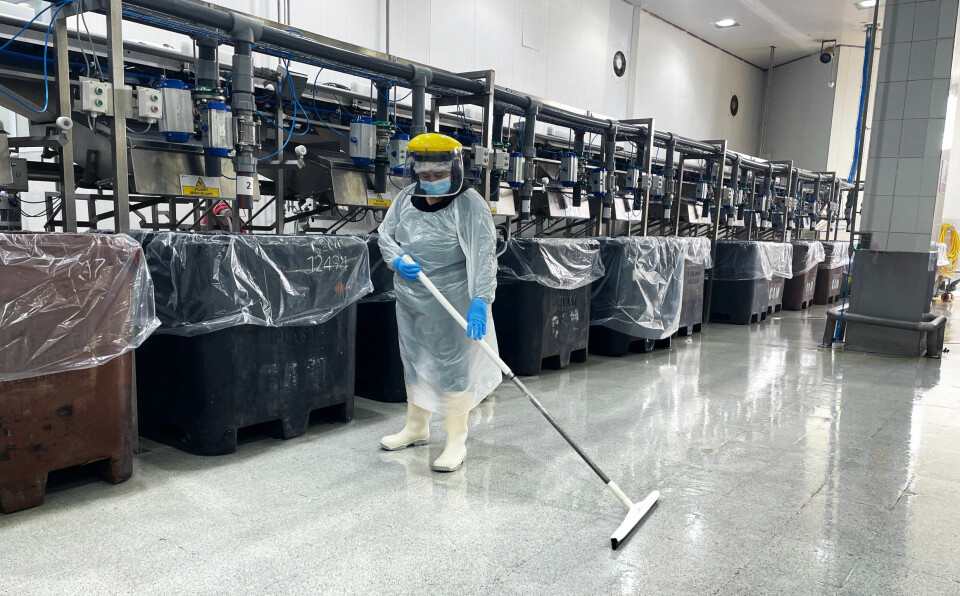
Mini marvels: salmon farmer uses nanobubbles to cut disinfectant use
Camanchaca adopts technology at processing plant after successful trial
Salmones Camanchaca has become the first salmon farming company in Chile to integrate a nanobubble system into its hygiene processes after a trial at a processing plant resulted in a significant reduction in chemical use.
The use of nanobubbles in the chiller system of Camanchaca’s San José primary processing plant, located in the commune of Calbuco, Los Lagos region enabled a 70% reduction in disinfectant use and a 50% reduction in the use of detergents used in the foaming process.
Nanobubbles, smaller than a thousand nanometers in size and imperceptible to the human eye, are currently the most efficient system for transporting gases, remaining for days or weeks in a liquid medium, enabling fungi and bacteria to be effectively sanitised.
Start-up company Kran, from Puerto Varas, collaborated with Camanchaca on the project.
More effective
Ignacio Coronado, head of industrial projects at Kran, said: “These bubbles increase the efficiency of detergents and disinfectants, which leads to a more effective elimination of contaminants and microorganisms on various surfaces. This was the main objective for both companies in this R&D project, so we are proud of the results obtained and Salmones Camanchaca’s confidence in us.”
The nanobubbles, composed of a mixture of different gases, can enter materials of different porosities, allowing detergents or sanitisers to be applied to smaller surfaces and improving their impact over time. This reduces the amount of water and chemical products used without affecting high quality standards.
Karol Baron, deputy process manager at Salmones Camanchaca, said: “This project is aligned with our sustainable objectives and goals, seeking not only best environmental practices, but also contributing to the development of new local solutions that can be replicated and are scalable both for the aquaculture industry and others, which is why we are already implementing it in our facilities.”






















































